Elaeagnus umbellata
By Victoria Wallace and Alyssa Siegel-Miles, UConn Extension
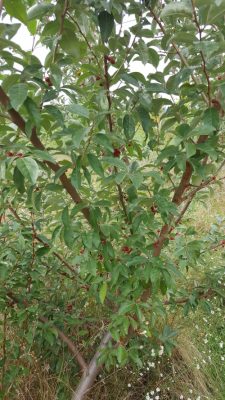
Identifying Features
- OVERVIEW: Deciduous shrub or small tree. Height: up to 20 ft; width: up to 30 ft. Densely branched. Tiny scales on the twigs, fruit, and undersides of leaves. Fast grower and prolific seed producer.
- LEAVES: Alternate, oval, simple, leathery, 2-4 in long, with finely pointed tips and short petioles. Green tops of leaves, with silvery scales on the lower surface. Margins are often wavy and lack teeth. Leaves emerge early, in mid-March.
- BARK/STEMS: Young stems and buds are silvery-gray with brownish scales (lenticels), producing a speckled appearance. 1-3 in, sharp thorns are formed on branch spurs. Mature bark is light gray to gray-brown, commonly furrowed, with prominent lenticels.
- FLOWERS: Small, yellowish-white, tubular (fused at the base), with four petals, which are pointed at the tips; arranged in clusters of 1-8. Flowers prolifically from April to June, with peak bloom in mid-May. Highly fragrant, with a lily-like scent. Pollinated by insects.
- ROOTS: Capable of fixing nitrogen in its roots.
- FRUIT: Fleshy, round, abundant clusters of drupes from August to October. Emerge silvery with brown scales; mature to bright red, finely dotted with metallic scales, with a rough, sandpapery feel.
- REPRODUCTION/SPREAD: Predominately by seed, which is eaten and dispersed by birds and mammals. Some vegetative propagation also occurs. Open-pollinated, often by insects.
- LOOK-ALIKES: Russian olive (Elaeagnus angustifolia) is similar in appearance and also invasive in Connecticut, but is less common. It can be distinguished from Autumn olive by its leaves, which have silvery scales on both sides, and its mealy, yellow or silvery fruit.
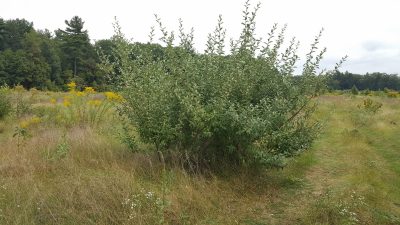
Habitat
Autumn olive out-competes and displaces native shrubs, forming monotypic stands that reduce habitat diversity. An aggressive invader of roadsides, pastures, old fields, and other disturbed habitats that spreads rapidly. It thrives in full sun and a variety of soil and moisture conditions; it is moderately shade tolerant. It is extremely hardy and tolerates drought, wind, and air pollutants. As a nitrogen fixer, it can interfere with natural plant succession and nutrient cycling, and can change soil suitability for other shrub species.
Control
For best results, employ a combination of control tactics to manage this plant. Refer to CIPWG’s Management Calendar (cipwg.uconn.edu) for more information.
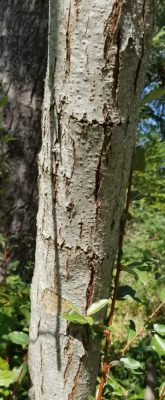
MECHANICAL CONTROL: May be sufficient to eradicate small infestations; for established stands, mechanical controls may be used in conjunction with chemical controls for more effective results. Any autumn olive plants found to be newly colonizing an area should be removed as soon possible.
Pulling/digging: Removal of seedlings and small plants provides effective control. Tools (e.g., Extractigator®, Root Talon©) can help facilitate removal of larger plants. Root crowns must be entirely removed in order to prevent resprouting. Hand removal of specimens larger than 3.5 in. in diameter is not recommended, due to the likelihood of resprouting from any roots that remain in the soil. Removal is easiest when the soil is moist. Minimize soil disturbance; tamp down soil after completion. Wear protection from the plant’s thorns (e.g., thick gloves, long canvas sleeves).
Cutting/mowing: Repeated cutting will limit autumn olive’s spread, but resprouting will occur from the root crown. Resprouts can be treated with herbicide for greater efficacy.
Girdling of the tree trunk may be an effective method to reduce vigor or kill large trees. A cut through the bark, approximately 6” above the ground, and cut completely around the trunk, will kill the top of the tree. However, re-sprouts are common, and may require follow-up treatments for several years.
CHEMICAL CONTROL: Follow label direction when using all chemical treatments.
Foliar sprays (e.g., of triclopyr) are effective from one month after leaf expansion until mid-autumn. Penn State Extension provides more information and a management calendar.
Cut-stem treatments: Immediately after cutting, apply a systemic herbicide (e.g., triclopyr) to freshly cut stems or stumps with a paint brush or sponge applicator. Treatment can be applied anytime during the year when the plant is actively growing, except in early spring, when plant sap is flowing upwards from roots to sprouts/stems.
Basal bark treatments: A concentrated mixture of herbicide in basal oil is applied to the entire circumference of the lower 12-18 in. of the intact stem, anytime during the year.
For larger trees, three approaches are possible:
Girdle the tree (see description above), and apply triclopyr* in the cut around the trunk; 2) Cut down tree and apply triclopyr* into the freshly cut surfaces of the stump; or 3) Cut down tree and spray re-sprouts before they get too tall to correctly spray the top surface.
*Refer to Michigan Dept. of Natural Resources for more details. Autumn olive plants treated with any herbicide should be monitored for several years, as they may resprout.
Distribution and Background

Autumn olive is found from Maine, south to northern Florida, west to Nebraska, with scattered infestations in the Northwest U.S. Autumn olive is native to China, Japan and Korea. It was introduced into the U.S. in the 1830s.
Native Alternatives
While plentiful, Autumn olive fruit is of low nutritional value to wildlife in comparison to the native shrub species they displace. Recommended native alternatives include: persistent berries and bright fall color: Aronia arbutifolia (red chokeberry), A. melanocarpa (black chokeberry); persistent berries: Ilex verticillata (winterberry), Viburnum opulus ssp. americanum (syn. V. trilobum, highbush cranberry -- NOT the European V. opulus ssp. opulus); fall wildlife food source: Cornus amomum (silky dogwood), C. racemosa (gray dogwood), C. sericea (red twig dogwood).
SOURCES:
- Chandran, R. & Loyd, B. (n.d.). Autumn Olive. West Virginia University Extension. https://extension.wvu.edu/lawn-gardening-pests/weeds/autumn-olive
- Maine Natural Areas Program. (n.d.) Maine Invasive Plants Bulletin #2525: Autumn Olive/Russian Olive. University of Maine Cooperative Extension.
- Michigan Department of Natural Resources. (2012, February). Invasive Species - Best Control Practices: Autumn olive. https://mnfi.anr.msu.edu/invasive-species/AutumnOliveBCP.pdf
- National Park Service & U.S. Fish and Wildlife Service. (2010). Autumn Olive. In Plant Invaders of Mid-Atlantic Natural Areas, 4th ed. https://www.invasive.org/alien/pubs/midatlantic/elum.htm
- Picone, P. (2000). Invasive Plant Information Sheet: Autumn Olive. Connecticut Invasive Plant Working Group. https://cipwg.uconn.edu/wp-content/uploads/sites/244/2013/10/final-Autumn-Olive-factsheet.pdf
- Templeton, S. Gover, A., Jackson, D., & Wurzbacher, S. (Updated 2021, October 27). Autumn Olive. PennState Extension. https://extension.psu.edu/autumn-olive
- Varricchio, E. & Connecticut Invasive Plant Working Group. (n.d.). Connecticut’s Invasive Plant Management Calendar: The Top 10 Invasive Plants [PowerPoint slides]. Connecticut Invasive Plant Working Group. https://cipwg.uconn.edu/wp-content/uploads/sites/244/2018/10/Invasive-Plant-Management-Calendar.pdf
Questions? Contact:
Vickie Wallace
UConn Extension
Extension Educator
Sustainable Turf and Landscape
Phone: (860) 885-2826
Email: victoria.wallace@uconn.edu
Web: ipm.uconn.edu/school
UConn Extension is committed to providing equal access and full participation for individuals with disabilities within all our programs and activities. Visit s.uconn.edu/accessibility for more resources. UConn is an equal opportunity program provider and employer.
©UConn Extension. All rights reserved.
Updated March 2022
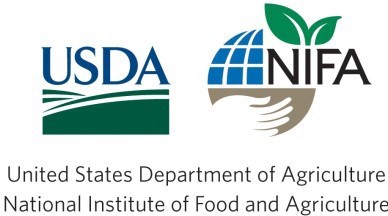 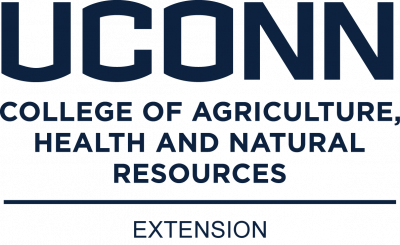 |